In many ways, cultures are founded and shaped by the myths families, communities, and even whole societies are raised on. In America, many of us are familiar with and often take entire classes on Greek and Roman mythology. And that doesn’t begin to include the tales of Santa Claus, the Easter Bunny, and other religious stories you can either take as true or consider as much as a myth as Zeus and Hercules.
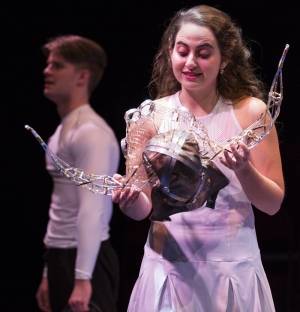 In Illinois Theatre’s production of The Minotaur, reality, myth, and modern life cme together to be consistently thought provoking but, I found at times, not always synchronized. Written by playwright Anna Ziegler and directed by Tom Mitchell, this classical Greek myth remade with modern stereotypes recounts the tale of the fearsome Minotaur who was half-man, half-bull and ate nothing but human flesh.
In Illinois Theatre’s production of The Minotaur, reality, myth, and modern life cme together to be consistently thought provoking but, I found at times, not always synchronized. Written by playwright Anna Ziegler and directed by Tom Mitchell, this classical Greek myth remade with modern stereotypes recounts the tale of the fearsome Minotaur who was half-man, half-bull and ate nothing but human flesh.
The play begins by introducing us to the Minotaur, played by the incredibly talented S. Janjay Knowlden, who we almost automatically feel sympathy for as he tries to escape the maze that traps him in both a mental and physical prison. Identified as the Minotaur only by a mask that can be easily taken on and off, Knowlden and the production quickly establish that the Minotaur is only who he is by forced circumstance, not personal choice.
Choice, and whether or not people actually have control over their own lives, becomes an interesting conflict throughout the entirety of the play. The Minotaur frequently challenges his half sister Ariadne, played by Sara Freedland, to question if she really thinks all of the dreams she has about her life are choices she will be able to make independently, or if they are hopes with already decided answers.
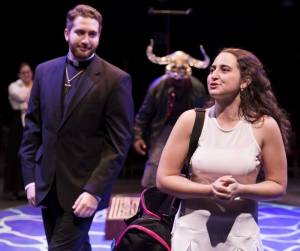 While overall I enjoyed the character of Ariadne and thought Freedland acted her to the fullest, because of the stereotypical, superficial shaping of Freedland’s character as basically a shallow college girl, I rarely felt as if Freedland was able to move beyond that portrayal and show the anguish of being trapped in a life she feels unfairly forced into, with the only choice of a way out being to kill her brother.
While overall I enjoyed the character of Ariadne and thought Freedland acted her to the fullest, because of the stereotypical, superficial shaping of Freedland’s character as basically a shallow college girl, I rarely felt as if Freedland was able to move beyond that portrayal and show the anguish of being trapped in a life she feels unfairly forced into, with the only choice of a way out being to kill her brother.
The myths of the Minotaur and conflict between choice and fate were the two central issues I greatly enjoyed, and thought were energetically acted by Patrick Weber as Theseus and the three “Voices of Reason,” played by Aryamehr Mohseni as the Priest, Mark Tyler Miller as the Lawyer, and Maureen Sanderson as the Rabbi.
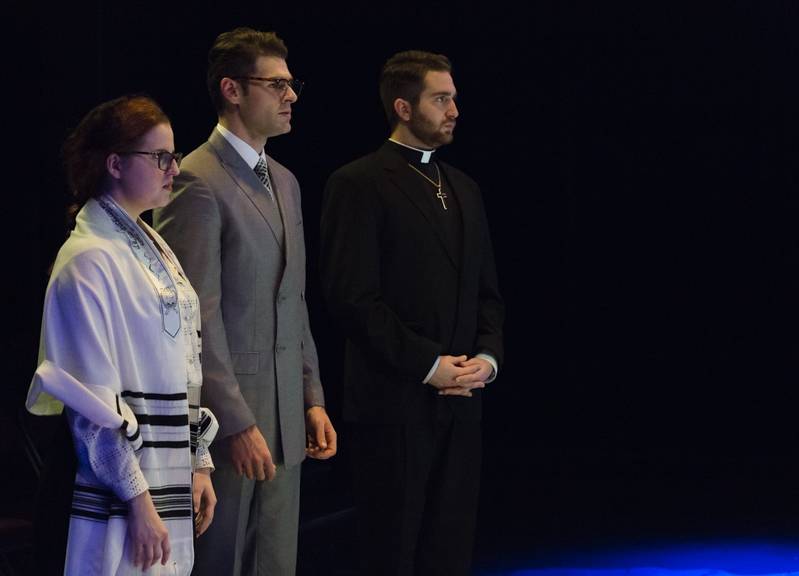
However, while the tension between fate and choice was always kept at the forefront of the play and did leave me with provoking questions, I struggled to understand why Mohseni, Miller, and Sanderson were characterized as they were and what their roles as religious and judicial figures were supposed to add to the play. I realize that religions are partially built from true stories or myths, depending on your beliefs, and beyond considering their roles as representative of the myths and false beliefs we hold of individuals today, I struggled to connect what their characterization added to the moral and societal struggles of the story.
Despite the at times confusingly modern allusions and metaphors, the questions raised from a thousands year-old Greek myth were clearly meant to be still relevant to current issues we face now. When told he is a monster, the Minotaur responds by asking, “What defines a monster?” And indeed that is a question we have to ask ourselves, as everyday we are faced with actions we may or may not consider monstrous. What will change the immediate seconds after, and in effect the course of history, is how we decide to act and therefore affect the lives and well-being of others in either good or bad ways.
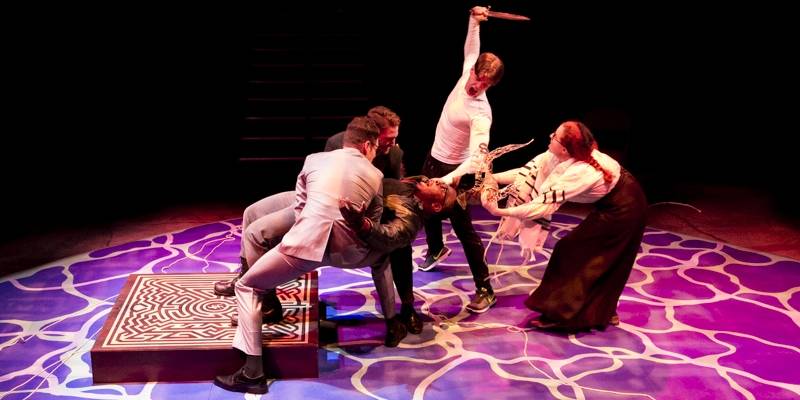
While that is heavy topic to consider, the Minotaur leaves us with hope that we are not circling the maze of life lost and confused with no control over our choices. The Minotaur can take off and put back on his mask, implying that he can decide to be, and not be, the Minotaur. Even though he is eventually slayed by Theseus, the story is told and retold by the Voices of Reason, Ariadne, and Theseus, and in one version the Minotaur somehow comes back to life for a brief time and changes the course of the whole story for the better. By this action, the Minotaur, Theseus, and Ariadne realize that, while they may not be able to control what happens to them and shouldn’t blame themselves for the life they were born into, they can control the decisions they make in response to a situation which may be one of the most important aspects of freedom.
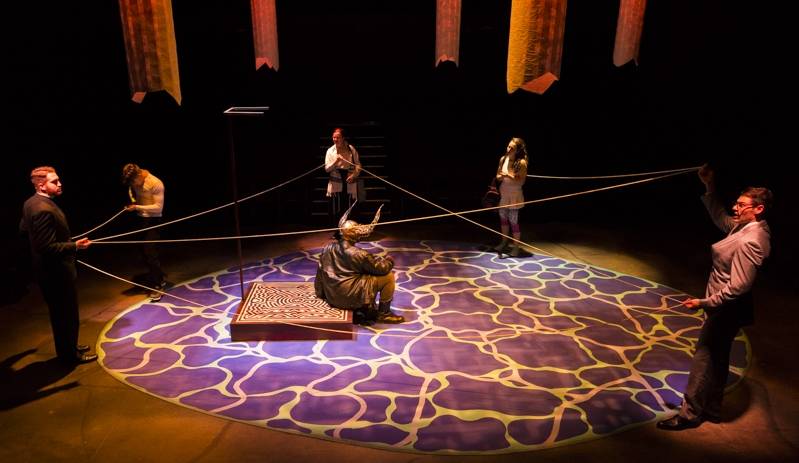
Admittedly, The Minotaur was not one of the plays I’ve most enjoyed at Krannert. That said, each actor gave their best to what I felt were awkwardly modern characters, and did have periods of great success. But more than that, The Minotaur asked us to consider the struggle between what we see as good or bad, to ask who gets to make that decision, and when faced with the worst of circumstances, what choice would we make in response?
The Minotaur will be playing at the Studio Theater at the Krannert Center for Performing Arts Tuesday-Saturday, November 1-5th at 7:30pm, and Sunday, November 6th at 3pm. The production is intended for mature audiences only, and tickets can be purchased online.
All images by Stephen Kemp.








